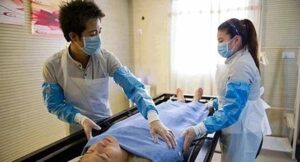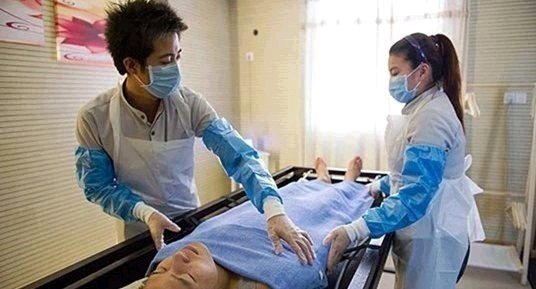Preparing a body for burial involves several steps, including the removal of certain items or substances. These processes vary depending on cultural, religious, and legal considerations. Here are some common practices:

1. Clothing: In many cultures, the deceased is dressed in burial attire. This clothing is typically chosen with respect to religious or cultural customs. It’s essential to remove any clothing that the deceased was wearing before burial. Some traditions require specific garments, while others prefer simple shrouds.
2. Jewelry and Personal Effects: Jewelry, watches, and other personal effects are usually removed before burial. These items may hold sentimental value to the family or may be valuable and could be repurposed. It’s customary for the family to decide whether to keep these items or bury them with the deceased.
3. Medical Devices: If the deceased had medical devices implanted, such as pacemakers or artificial joints, these are typically removed. Pacemakers, for example, can pose safety risks during cremation due to their explosive potential. Artificial joints and other implants may be reclaimed or disposed of according to regulations.
4. Prosthetics and Dentures: Prosthetic limbs, dentures, and other artificial body parts are often removed before burial. These items may not decompose naturally and can interfere with the embalming process. In some cases, they may be returned to the family.
5. Toxic Substances: If the deceased had received medical treatment involving toxic substances, such as chemotherapy drugs, efforts may be made to remove residual toxins from the body. This is done to prevent environmental contamination during burial.
6. Organ Donation: In cases where the deceased has chosen to donate organs, those organs are surgically removed by trained medical professionals before burial. This is typically done in a respectful manner and according to the wishes of the deceased and their family.
7. Fluids: During embalming, bodily fluids are drained and replaced with embalming fluid to preserve the body. These fluids are safely disposed of according to local regulations and ethical guidelines.
Removing these items ensures that the body is properly prepared for burial or cremation and respects the wishes of the deceased and their family. It’s essential to adhere to cultural, religious, and legal norms while handling the deceased with dignity and respect.Preparing a body for burial involves several steps, including the removal of certain items or substances. These processes vary depending on cultural, religious, and legal considerations








